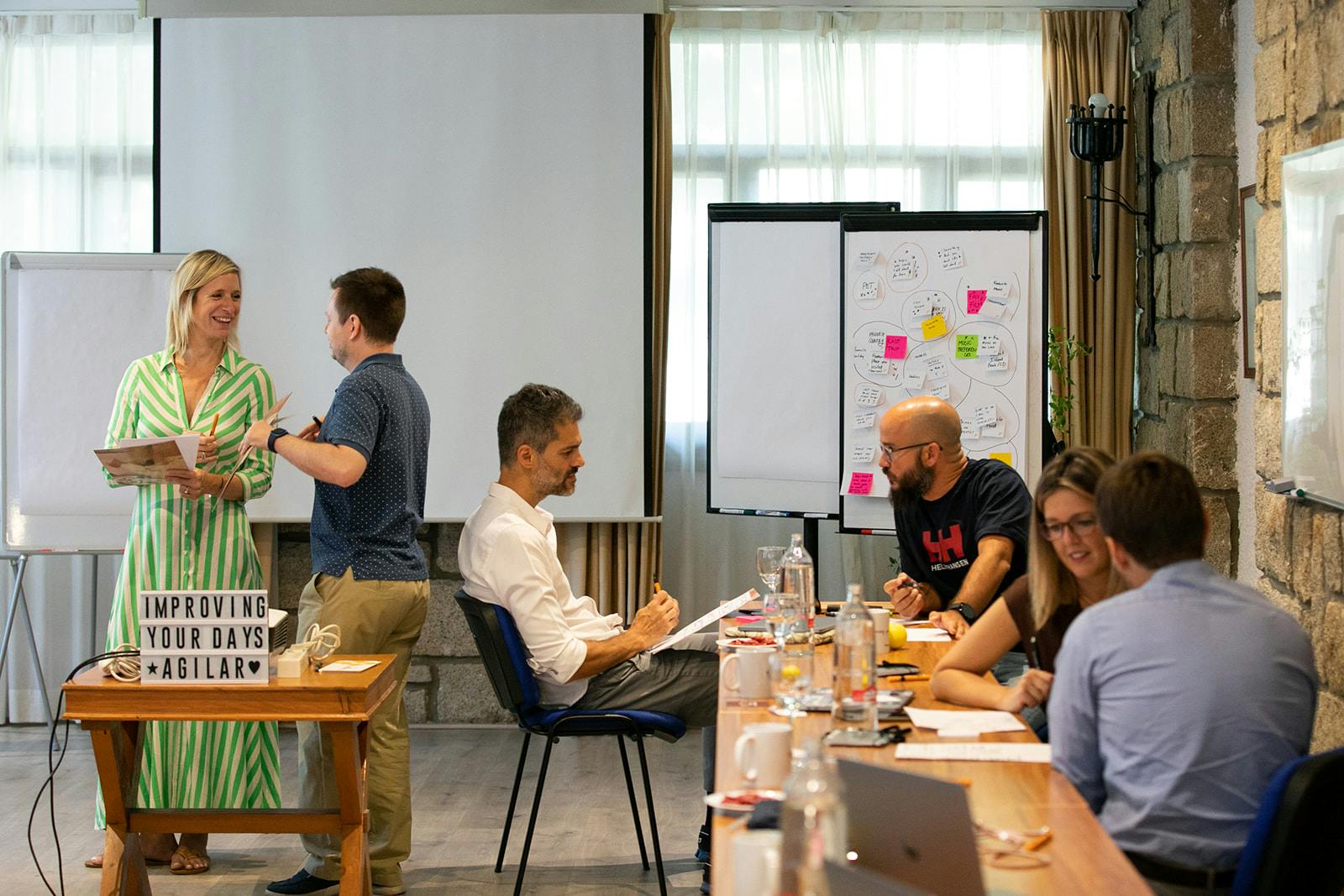Breaking the myth: Dependencies aren’t “the enemy” — they’re a signal

Agilar Team
05 Nov, 2025
scrum mastery
business agility
scrum mastery
business agility

In many Agile environments, dependencies show up like a monster under the bed.
“We have too many dependencies.”
“We need to manage the dependencies.”
“Dependencies are slowing us down.”
At Agilar, we look at dependencies differently. We see them as signals — not just obstacles to hammer out of existence.
When a team is blocked by another part of the organization, it isn’t just a technical issue. It’s a symptom of a system that is not aligned — roles, decisions, flow, priorities. Seeing it through that lens changes the question from “How do we eliminate dependencies?” to “How do we understand them, make them visible, and manage them as part of the system?”
Why does this matter?
- Ignoring dependencies simply hides problems under the rug. They resurface in retros, in sprints, in releases. We see this especially in scaling environments, where the hardest part isn’t managing the backlog — it’s building bridges between teams.
- Dependencies are tied to real value delivery. If two (or more) teams need each other to move forward, value arrives only when they progress together. Missing that connection means missing the value chain itself.
- And when teams grow in Agile maturity, seeing and handling dependencies becomes a sign of collective evolution. In BeanStalk, for instance, Scrum Masters often discuss how to collaborate across teams sharing goals or resources. Spotting dependencies becomes part of the collective learning. It’s not just about unblocking work — it’s about building shared autonomy.
Three Agilar-style steps to turn dependencies into opportunities
These are practices we’ve applied across teams, multi-team groups, and organizational transformations.
Step 1: Make them visible and traceable
Saying “we have dependencies” isn’t enough. Represent them clearly: who depends on whom — when — with what impact — and what type (decision, delivery, integration, infrastructure).
Some ways to do this:
• Dependency mapping during multi-team planning: visualizing lines between teams and highlight hot spots.
• Tracking dependencies as board items — not just tasks (“waiting for team X”, “blocked by Y”, “pending interface”).
• Explicit dependency reflections in retros: “Which dependencies slowed us down this sprint? How can we reduce their risk next time?”
Step 2: Reduce them — or build the muscle to manage them
Once visible, there are two paths:
• Minimize them: reorganize teams, redefine deliverables, invest in early integration, remove unnecessary interfaces.
• Accept them — and build capacity: sometimes you can’t erase a dependency, but you can manage it intentionally (e.g. early feedback, parallel mitigation tasks, frequent integration cycles).
Step 3: Turn dependencies into a competitive advantage
This is where most organizations fall short. When teams truly see and manage dependencies, they gain speed and adaptability.
They can:
• Reduce surprises by mapping handoffs early
• Negotiate with stakeholders using facts
• Design workflows that include dependencies rather than fight them (shared roadmaps, continuous cross-team integration, aligned cadences)
In large transformations, we’ve seen this shift not because dependencies vanish — but because teams learn to walk with them.

Real stories: When dependencies became strengths
To keep it concrete, an example we’ve lived at Agilar:
- In a large logistics company, an IT team depended on a legal/regulatory process. Instead of waiting for “finished” legal input, a joint legal-IT squad was formed. They iterated together. Result: the dependency stayed — but the collaboration became so smooth that delivery delays dropped dramatically.
Quick checklist for Scrum Masters / Agile Coaches
Ask yourself:
- Do you have a place where dependencies are visible to everyone?
- Do your retros include questions like “Which external dependency slowed us down?”
- Are there inter-team agreements for mitigating dependencies (early integration, waiting criteria, buffers)?
- Do stakeholders help solve dependencies — not only point them out?
- Can you see improvements in delivery frequency or team speed as dependency management matures?
If any answer is “no”, you have a meaningful opportunity to improve — today.
Final thought
Dependencies won’t magically disappear. But instead of “invisible enemies,” they can become powerful organizational thermometers — and real levers for improvement.
At Agilar, we believe agile maturity is the ability to make dependencies visible and work through them together.
If you’d like to explore how to apply this in your team, workflow, or organization, let’s talk. Improving how we work together is a very good Monday.